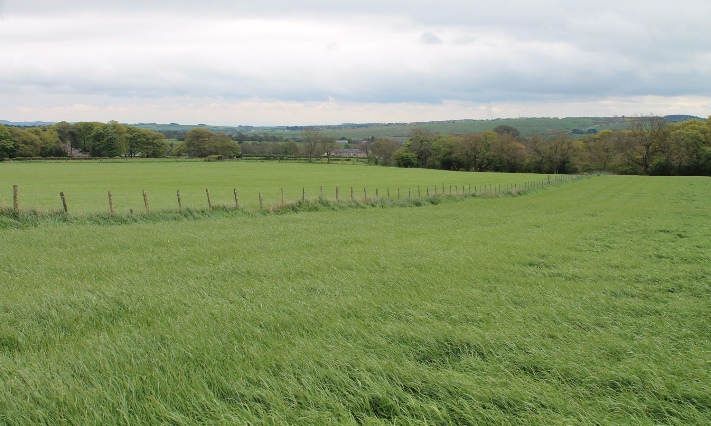Right grass in the right place
With 320 dairy cows and 700 breeding ewes on 244ha (600 acres), John Thompson and his brother Andrew of Softley Farm, Butterknowle, Bishop Auckland, have to make sure there is enough high quality grass and conserved forage to feed throughout the year.
The highest yielding dairy cows are housed and fed a complete diet of grass and wholecrop silage with an added protein blend. Lower yielders graze in the fields from May onwards.
Silage for the dairy unit is grown on the lower ground at 182 metres (600ft), rotated around the fields with the wheat grown for wholecrop.
Last year Mr. Thompson reseeded with Sabre – a three-year silage mix from Oliver Seeds, with Italian ryegrass, tetraploid hybrid ryegrasses and Perseus festulolium, which is good for high stress situations, whilst still offering high yields and quality.
Into this mix, was added 4kg of persistent, multi-cut westerwold annual ryegrass, to give an added boost to the first cut yield. Three to four cuts of this are taken for silage each year.

“We always reseed around 70 acres across the farm, preferably in the autumn,” says Mr. Thompson. “We can get caught our with much lower yields than we were expecting if we don’t keep on with regular reseeding.
“We plough, roll, power harrow once or twice, then roll and drill the seed. It is not the cheapest way of doing it – but we always get good takes.”
Higher up the hill at 300 metres (1,000ft), the Thompson’s sow Javelin, a medium term ley which offers flexibility to cut or graze. It contains ryegrasses with a wide range of heading dates, timothy and white clover.
It is grazed with the North Country Mules and Continental Cross Mules early in the spring before lambing, and grazed again after a second cut of silage is taken.
“Our land is reclaimed open cast colliery workings and the soils are thin and wet,” says Mr. Thompson. “Yet we have to produce high yields of quality forage to support our high yielding cows. They are currently doing 9,000 litres of milk per year, with 4,000 coming from forage – which means we must be growing the right grass, in the right places for the right type of animal!”
